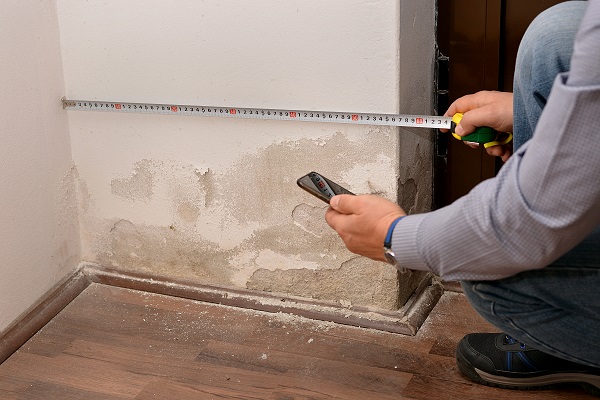Do's & Don'ts of Water Restoration.
Do's & Don'ts of Water Restoration.
Blog Article
This post in the next paragraphs on the subject of Reducing Your Risk Of Water And Fire Damage At Home is highly stimulating. Read it for your own benefit and figure out what you think about it.

Water offers life, however water intrusion on some components where it's not intended to be can lead to damage and also aggravation. It can peel away the surface area as well as erode the material's structure if the water seeps right into your structure. Mold and mildew and mold also grow in a moist environment, which can be hazardous for your and your household's wellness. Furthermore, houses with water damages scent stuffy and old.
Water can come from numerous sources like tropical cyclones, floodings, burst pipelines, leaks, and sewer issues. If you have water damage, it's far better to have a functioning understanding of security precautions. Here are a couple of guidelines on just how to take care of water damage.
Do Prioritize Residence Insurance Coverage Protection
Seasonal water damage can originate from floodings, seasonal rains, and also wind. There is also an event of a sudden flood, whether it originated from a defective pipe that unexpectedly breaks into your house. To shield your residence, get house insurance coverage that covers both disasters such as all-natural calamities, and emergency situations like broken plumbing.
Don't Forget to Turn Off Utilities
When catastrophe strikes as well as you're in a flood-prone area, shut off the major electrical circuit. Switching off the power prevents
When water comes in as water offers as a conductor, electric shocks. Don't forget to shut off the primary water line shutoff as a means to prevent more damage.
Maintain your furnishings steady as they can relocate around as well as trigger extra damages if the floodwaters are obtaining high.
Do Remain Proactive and also Heed Weather Condition Alerts
If you live in an area tormented by floodings, stay positive as well as ready at all times. Listen to the news as well as emptying warnings if you live near a body of water like a creek, river, or lake.
Do Not Disregard the Roof
Your roofer needs to take care of the faulty gutters or any type of other signs of damages or weakening. An evaluation will protect against water from flowing down your wall surfaces and saturating your ceiling.
Do Take Note Of Small Leakages
There are red flags that can attract your interest as well as show to you some weakened pipelines in your house. Signs of red flags in your pipelines include gurgling paint, peeling wallpaper, water touches, water stains, or trickling noises behind the wall surfaces. Repair work as well as inspect your plumbing fixed before it results in substantial damage to your home, funds, and an individual problem.
Don't Panic in Case of a Ruptured Pipe
Timing is vital when it comes to water damage. If a pipe bursts in your house, promptly closed off your major water valve to cut off the source and protect against even more damages. Call a reputable water damage restoration specialist for assistance.
Water gives life, but water breach on some components where it's not intended to be can result in damages as well as trouble. In enhancement, residences with water damages smell old and musty.
Seasonal water damage can come from floods, seasonal rainfalls, as well as wind. Indications of red flags in your pipelines consist of bubbling paint, peeling off wallpaper, water touches, water discolorations, or dripping sounds behind the wall surfaces. If a pipe bursts in your home, immediately shut off your primary water shutoff to reduce off the resource as well as stop more damage.
Some Do's & Don't When Dealing with a Water Damage
DO:
Make sure the water source has been eliminated. Contact a plumber if needed. Turn off circuit breakers supplying electricity to wet areas and unplug any electronics that are on wet carpet or surfaces Remove small furniture items Remove as much excess water as possible by mopping or blotting; Use WHITE towels to blot wet carpeting Wipe water from wooden furniture after removing anything on it Remove and prop up wet upholstery cushions for even drying (check for any bleeding) Pin up curtains or furniture skirts if needed Place aluminum foil, saucers or wood blocks between furniture legs and wet carpet Turn on air conditioning for maximum drying in winter and open windows in the summer Open any drawers and cabinets affected for complete drying but do not force them open Remove any valuable art objects or paintings to a safe, dry place Open any suitcases or luggage that may have been affected to dry, preferably in sunlight Hang any fur or leather goods to dry at room temperature Punch small holes in sagging ceilings to relieve trapped water (don't forget to place pans beneath!); however, if the ceiling is sagging extremely low, stay out of the room and we'll take care of it DO NOT:
Leave wet fabrics in place; dry them as soon as possible Leave books, magazines or any other colored items on wet carpets or floor Use your household vacuum to remove water Use TV's or other electronics/appliances while standing on wet carpets or floors; especially not on wet concrete floors Turn on ceiling fixtures if the ceiling is wet Turn your heat up, unless instructed otherwise

I stumbled upon that article on Fire And Water Damage Prevention while doing a search on the internet. Are you aware of somebody who is curious about the topic? Why not share it. We value reading our article about Preventing Fires and Water Damage In Your Home.
Report this page